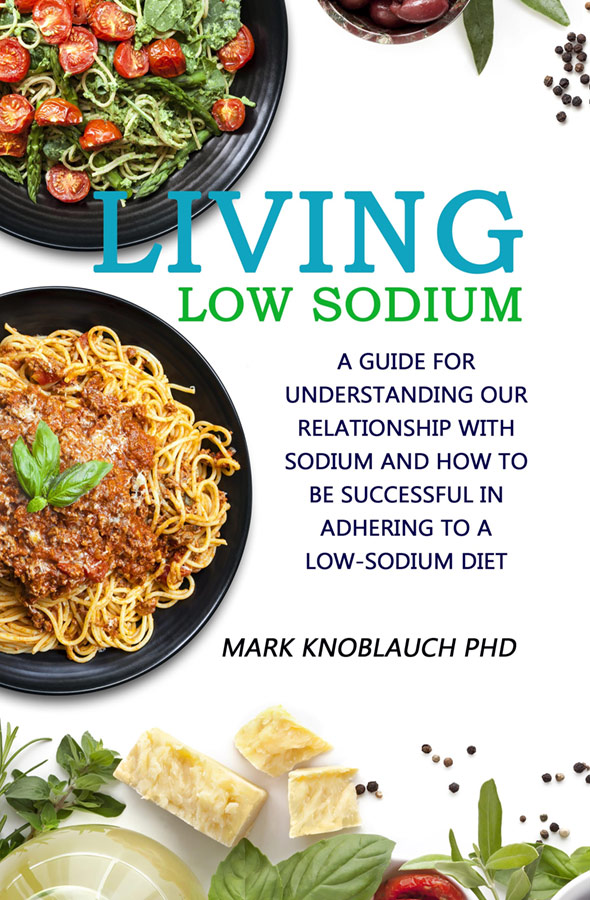Living Low-Sodium: A guide for understanding our relationship with sodium and how to be successful in adhering to a low-sodium diet
Synopsis
There’s no avoiding the fact that we consume too much sodium. Despite knowing the health benefits inherent to a lower sodium intake, successfully decreasing the amount of sodium in our diet can be quite difficult given the prevalence of high-sodium foods that exist all around us.
For some of us, taking on a low-sodium lifestyle is a choice, while for others it is a necessity due to an underlying medical condition. To assist us in reducing our sodium we can find a wealth of cookbooks on the market that provide low-sodium recipe options. But cookbooks don’t help us understand sodium. They don’t tell us why sodium is needed in our body, or why too much is problematic. And they don’t teach us how to reduce sodium in our diet.
Living Low-Sodium was written to address these issues and serve as a comprehensive resource for individuals who have decided to take on a low-sodium lifestyle. It is written by a scientist and educator who understands the science of sodium but who also wants to explain the ‘how’ and the ‘why’ of sodium’s interaction with our body. Furthermore, it is written by someone who has successfully navigated his own low-sodium journey for nearly a decade.
With this book, you will learn:
- What sodium is
- How sodium is utilized by our body
- What medical conditions are affected by sodium
- Sodium’s role in the food industry, including why sodium is a part of so many foods and recipes
- How to recognize the sodium content of food items
- How to easily reduce sodium in your own diet
Excerpts
The use of salt for seasoning is not its only need in a recipe, though, as certain sodium-based compounds are necessary to generate a reaction that is an essential part of the food’s production. For example, quick breads (e.g. banana bread) require compounds like baking soda in the ingredient list because of the compound’s ability to generate a specific reaction. To understand how all of this works we need to consider a phenomenon commonly known as ‘potential hydrogen’, or “pH”. In relatively scary science terms, pH represents the negative log of hydrogen concentration in a water solution. In less scary terms, pH is the concentration of hydrogen ions present in a solution. As hydrogen ion concentration increases, the pH becomes more acidic. Conversely, as hydrogen ion concentration decreases, the solution becomes less acidic.
Sodium chloride plays several roles in the food industry including not only food preservation and flavor enhancement, but also in helping food maintain its color as well as influencing food texture. Salt’s diversity in the food industry is largely the reason that Americans consume almost twice the recommended intake of sodium each day, and nearly eight times the body’s reported requirement of 500mg of sodium per day [1]. By far though, the two predominant uses of sodium chloride in the food industry are for food preservation and flavor enhancement (e.g. “palatability”). As we reviewed in Chapter 4, excess consumption of sodium chloride among those of us with certain medical conditions can have unfortunate complications, making it imperative that sodium intake is closely monitored.
What an amazing read!! I don’t have a “scientific” mind though you broke everything down to laymen’s terms, thank you so very much! I learned all the things I couldn’t find answers for these past 5 months and now feel even more empowered especially when dealing with hospital “nutritionists” & dieticians who really haven’t a clue about sodium let alone how it affects your body.
![]()
This was a phenomenal book for those of us “blessed” into a Low sodium lifestyle. I felt I was knowledgeable on the subject until I read about the ages-long relationship humans have with sodium, impact of food manufacturers, restaurants. Particularly of interest was the chapter on sodium as to how it relates to heart, kidney and other issues. It gave me insite into ways I can reduce my sodium load to improve health conditions affecting the heart and lungs. This book should also be required reading for healthcare professionals so that they can discuss sodium issues with their patients. Great read!
![]()
This book is very intriguing. I enjoyed reading about the problems the author had. Some sounded like my problems. He put his life right out there for us readers to understand we are not alone. That this is a lifetime of low sodium eating. I have not completely finished the book but so far it has captivated me. He explains things like how our forefathers ate so much sodium. And how it was developed. Very interesting read.
![]()
I have been low-sodium for several years, due to Menieres, and am always interested in learning more about how to manage my disease through diet. I feel fairly educated about sodium, or did until reading this book! I was impressed by the information available and fascinated by the effect sodium has on our bodies. I highly recommend this book to anyone looking into low-sodium living, for straightforward, clear information.
![]()


